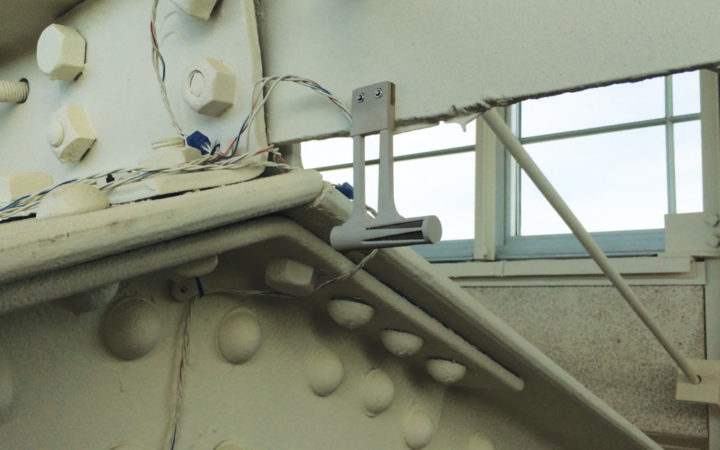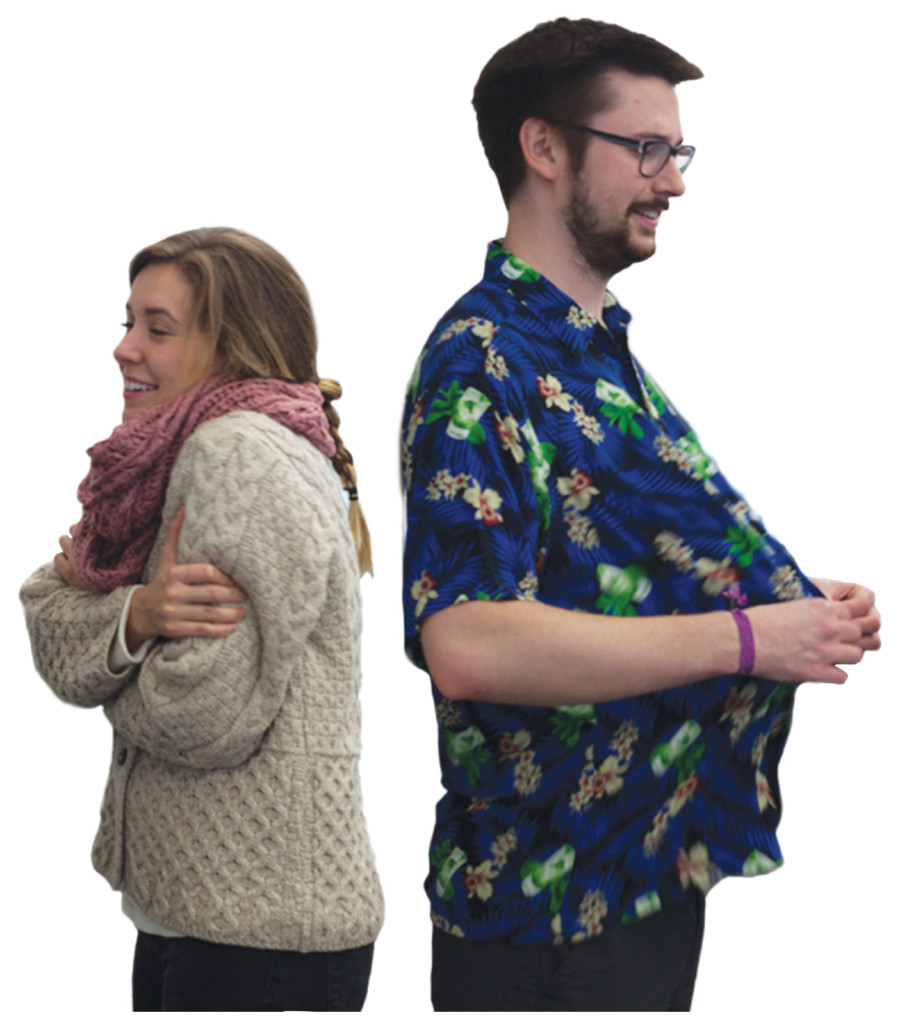“I can’t type with my gloves on.”
Wearing gloves is an unusual clothing choice for most office workers, but for the employees of the architecture firm KieranTimberlake, it’s just one of many side effects of the ongoing indoor climate studies taking place in their workplace. A world-renowned firm based in Philadelphia, KieranTimberlake has an office dedicated to developing sustainable, environmentally-friendly building designs—and in pursuit of this goal, the firm has turned its own office into a laboratory. Since I graduated from UC Berkeley’s College of Environmental Design with a Master’s in building science, I have joined a diverse team of architectural researchers at KieranTimberlake to study how building design impacts the comfort of the building’s occupants. This is a direct extension of my research at UC Berkeley, but I have found that implementing thermal comfort solutions in the real world is not as straightforward as it was in the controlled experimental setting I was accustomed to in graduate school.
 One of 400 sensors stationed around the KieranTimberlake office. Photo credit: KieranTimberlake.
One of 400 sensors stationed around the KieranTimberlake office. Photo credit: KieranTimberlake.
My job involves using a network of over 400 wireless temperature and humidity sensors installed around the KieranTimberlake office, as well as office-wide comfort surveys, to monitor the office’s “vital signs.” Although the nervous system of wireless sensors allows me to monitor the current conditions in the office, acting on this information can be challenging. It’s hard to maintain reliable temperature and humidity levels at KieranTimberlake because the office building is a renovated 19th century beer bottling plant with the original brick structure still intact. Persistent intrusions of the outdoor climate add a layer of complexity to thermal comfort research at KieranTimberlake that never existed at the Berkeley facilities I used in graduate school.
The centerpiece of these Berkeley facilities is the Thermal Comfort Chamber, a 320 square-foot room whose climate is entirely independent of the surrounding environment. I had access to this room as a member of the Center for the Built Environment (CBE), a consortium of architects and engineers who aim to improve human thermal comfort while reducing building energy demands. Other high-tech facilities used by the CBE include a wind tunnel to understand the impact of wind movement through a building and an artificial sky simulator to reproduce different daylight conditions.
My own research with the CBE sought techniques to allow individuals to personally control their local thermal environment, in contrast to the one-size-fits-all approach of regulating an entire building. One low-energy cooling solution I explored is the use of fans. Measuring the air speeds required to make different temperatures comfortable is challenging due to differences between test subjects in factors such as clothing and metabolic rate; nevertheless, I was able to determine that ceiling fans can keep people comfortable in typical office settings up to 84°F. As long as the ceiling fans are energy-efficient, this is very promising: for every 1°F increase on the thermostat, an office’s annual air conditioning energy bill has been estimated to decrease approximately 5-15 percent, depending on climate.
As promising as these results were in the laboratory setting, our controlled experiments did not reveal any downsides to using a fan for comfort over extended periods. At KieranTimberlake, fans were still successful at maintaining thermal comfort in temperatures in the low-80s, but the fan produced some non-thermal complications, such as “fan fatigue.” Fan fatigue is the term I coined for a person’s annoyance with air movement on their face or body over extended periods of time. My experiments in graduate school did not detect this side effect because my test subjects were only subjected to fan use for at most two hours, while the people at KieranTimberlake were working for at least eight hours per day.
 A temperature sensor with a special housing to protect it against UV light; this sensor is situated in a skylight in the office. Photo credit: KieranTimberlake.
A temperature sensor with a special housing to protect it against UV light; this sensor is situated in a skylight in the office. Photo credit: KieranTimberlake.
Generally, I have far less control over my test subjects at KieranTimberlake than I did over my test subjects in graduate school. At Berkeley, test subjects were often campus affiliates, and were selected to be representative of the global population. For experiments in the Thermal Comfort Chamber, I could require test subjects to maintain a dress code appropriate for the design conditions, and study the individuals’ comfort based on clothing level. At KieranTimberlake, however, the staff has the freedom to choose their attire, and clothing choice emerged as a central method to improve thermal comfort in the office. During the winter, most of the staff mastered the technique of wearing multiple clothing layers. However, in the summer, removing clothing can only go so far. Although shorts and skirts are commonplace, some employees are resistant to wearing non-traditional work apparel, and these few people must then endure the warm temperatures without the ability to release body heat effectively.
I also struggle to treat my test subjects at KieranTimberlake objectively since they are also my managers, project
 A modern era phenomenon— personal preference for indoor temperatures leads people to dress up (or down) at work. Design: Cindy Wang.
A modern era phenomenon— personal preference for indoor temperatures leads people to dress up (or down) at work. Design: Cindy Wang.
team members, colleagues, and friends. My “clients” are my bosses, the building owners, and even highly decorated architects. Put simply, my test subjects require consistent, comfortable conditions for work. If my experiments were to harm the firm’s performance, there would be consequences that go beyond new experimental data. After a full year of occupying the building and conducting testing, conditions were not always ideal, but the persistent feedback and participation of the staff provided valuable data for me and other research staff to make informed decisions about the building design and operation.
Despite the unique challenges of thermal comfort research in the field, there are still great opportunities to explore new ways to keep office workers comfortable. The sensor network and dedicated staff at KieranTimberlake allow me to study thermal comfort in a variety of indoor conditions and to quantify personal reactions. In addition, it has allowed me to discover the day-to-day and prolonged effects of certain comfort strategies on individuals. I commend the individual who wore gloves in our office on a cold winter day, sacrificing typing aptitude for thermal comfort. But as building scientists and designers, our goal is to find solutions that solve thermal comfort problems, reduce energy use, and allow building occupants to function happily and productively on a daily basis. By conducting these types of research in an architect’s office, there is great opportunity to improve architecture, as the results from the KieranTimberlake studies will spill over into influential building designs all over the world.
This article is part of the Spring 2016 issue.



